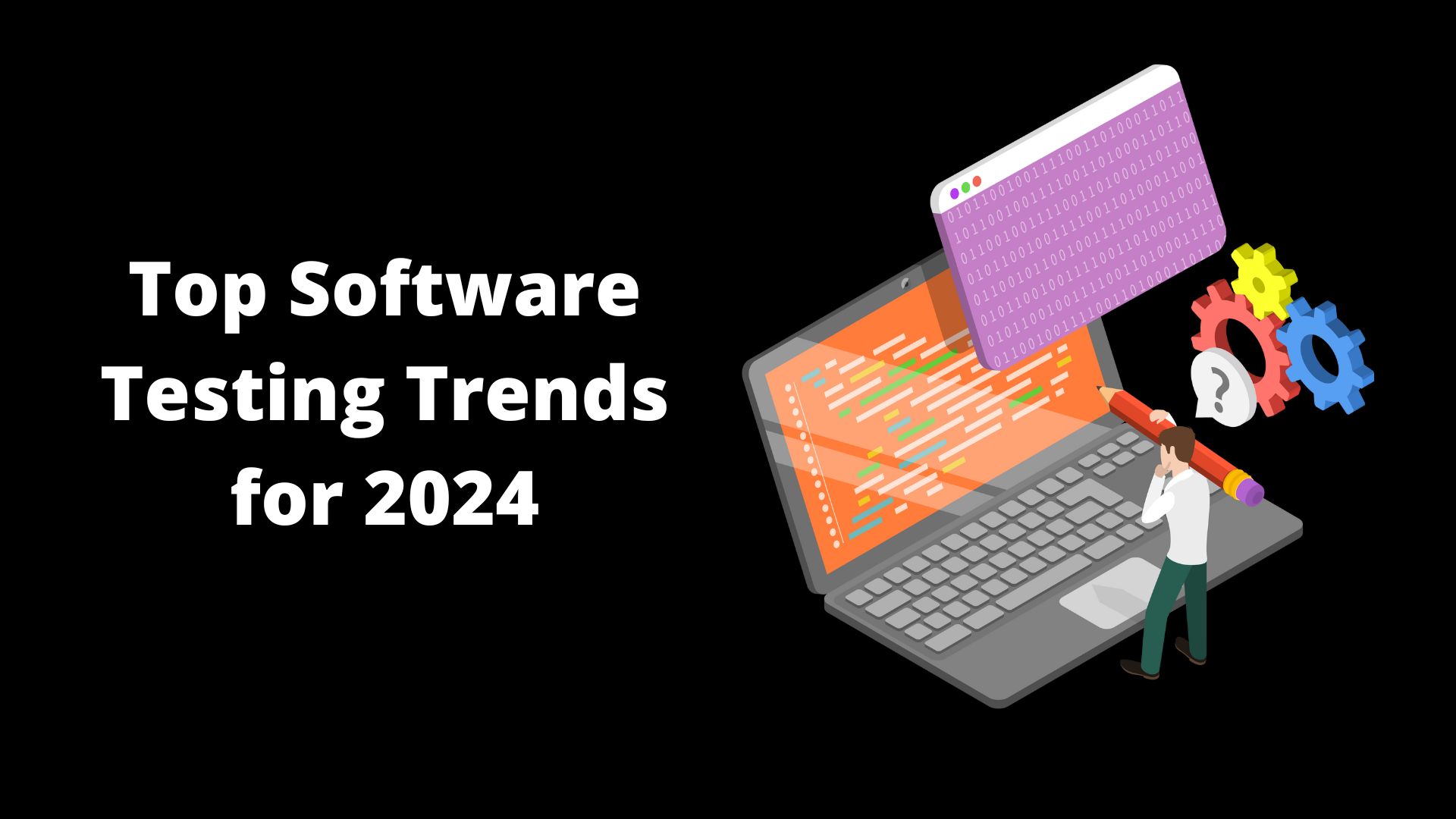I found different search results everytime I wrote my search query on Google, but I have still tried to figure out the most in demand software testing trends in 2024!
While trying something, you might fail multiple times. Then you try doing it with a different process. This also does not work. You try doing the same thing, third time, this time not repeating what you did earlier, but realizing what went wrong, what shouldn’t be repeated, and why this third method outshines the previous two. You eventually succeed. But learn a lot from your failure and success. This becomes the basis of the upcoming trends in testing. What works – stays, what does not work – fades away.
Remembering and keeping a note of such trends is important to compare what works out best and what shouldn’t be tried. Every new trend identifies potential risks during early stages of development. It is important to implement software testing trends in the process of software development life cycle (SDLC) to ensure customer satisfaction.
What is software testing?
Software testing is a systematic process that identifies and fixes defects and errors in software during development. It ensures that the software meets expected outcome. Implementing software testing in the early stages of the development process speeds up the development process. It is also a testament that the software adheres to the industry standards, regulations, and other critical compliance requirements.
What is the need to follow up with software testing trends?
Software testing trends help ensure that software meets modern user needs and adheres to evolving data security and privacy regulations. It identifies and prevents potential risks that might occur in SDLC.
In 2024, software testing trends (manual and automated) feature different trends for manual and automation engineers. Software testing trends for manual test engineers include: (1) UX testing, (2) Exploratory testing, (3) UI improvements, and (4) Ad hoc testing. Software testing trends for automation test engineers in 2024: (1) Shift left testing, (2) Scriptless automation testing, (3) Mobile test automation, (4) QAOps, and (5) Crowdtesting.
Consider these software testing trends in 2024
Software testing trends ensures software meets modern user needs and adheres to evolving data security and privacy regulations.
- Automation: Automation reduces the risk of human error.
- Real device testing: This is important for gauging software performance in regions where users access services.
- Security and functional testing: With an increase in the number of IoT devices, both functional and non-functional testing techniques become relevant.
- Machine learning: It increases the usefulness of testing tools for developers by reducing the need for manual steps.
- Visual testing: Visual testing is important for creating a positive user experience by ensuring that an application is user-friendly and meets user expectations.
- Configuration management: Configuration management helps ensure that software systems remain consistent and reliable over time.
Besides these, certain software testing trends will continue in 2024:
- Shift left testing: This testing is performed during the early stages of software and system development to identify potential bugs and issues before they become more serious. The goal is to reduce debugging time so that the team can focus on improving features and functionality. This approach moves testing activities earlier in the software development life cycle to identify potential issues and bugs before they escalate. This can help minimize the time spent on debugging and allow the team to focus on enhancing features and functionality.
- IoT testing: The growing use of IoT devices in many industries, such as healthcare, transportation, and manufacturing, makes IoT testing an important trend for the future.
- Artificial intelligence: Artificial intelligence and machine learning can help make automation testing more efficient, which can improve the test automation and cross-browser testing processes.
- Test automation: The global test automation market is expected to grow from $12.6 billion in 2019 to $28.8 billion by 2024, and to $85.84 billion by the end of 2024. Automation is being adopted by software development companies to ensure that security testing and penetration testing are performed with every release cycle, and that security compliance is maintained.
- Security testing: Security vulnerabilities can have a significant financial and reputational impact on businesses, therefore software testing is essential.
- Mobile test automation: Mobile applications are becoming more popular, which increases the scope of mobile testing. Mobile test automation should be part of DevOps toolchains to support DevOps.
- Accessibility testing: Software development teams are expected to focus more on web accessibility in the next two years. In many countries, laws and regulations require businesses and organizations to make their software applications accessible.
- Test automation: This involves using tools and test scripts to test the software, which can speed up the testing process, ensure faster releases, and deliver accurate results.
- DevSecOps: This promotes early security integration into the software development process, incorporating security testing activities with continuous testing and feedback.
Google shows many more results – Security testing, Artificial intelligence, IoT testing, Mobile testing, Automating API testing, Scriptless automation, Balancing Automation And Manual Testing, Big Data Testing, System integration, QAOps, Software Testing – which have been trending at some point in time and have chances of being adopted by development teams in future.
Key Lessons Learned
Software testing identifies and rectifies defects – bug – errors – issues within the software. It validates the software’s functionality, speeds up the application and improves user experience.
It is important to keep a watch on software development trends along with software testing trends as they reveal the direction the industry is moving, they indicate the testing approach to be followed. Emerging technologies like AI, IoT, and Blockchain pose different testing complexities which needs a strategy to walk through. A knowledge of and software testing trends ensure that the app development process stands out in the marke





